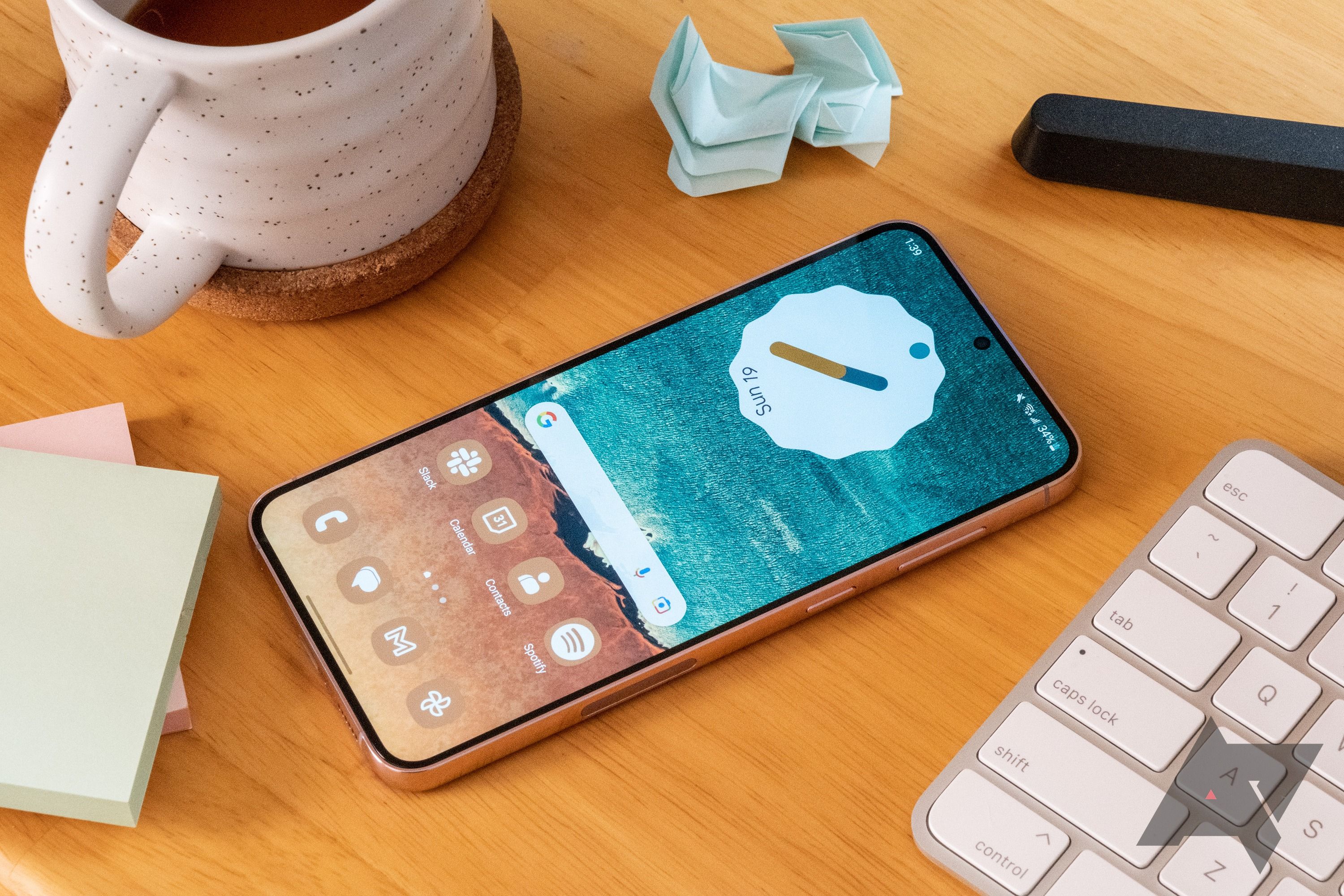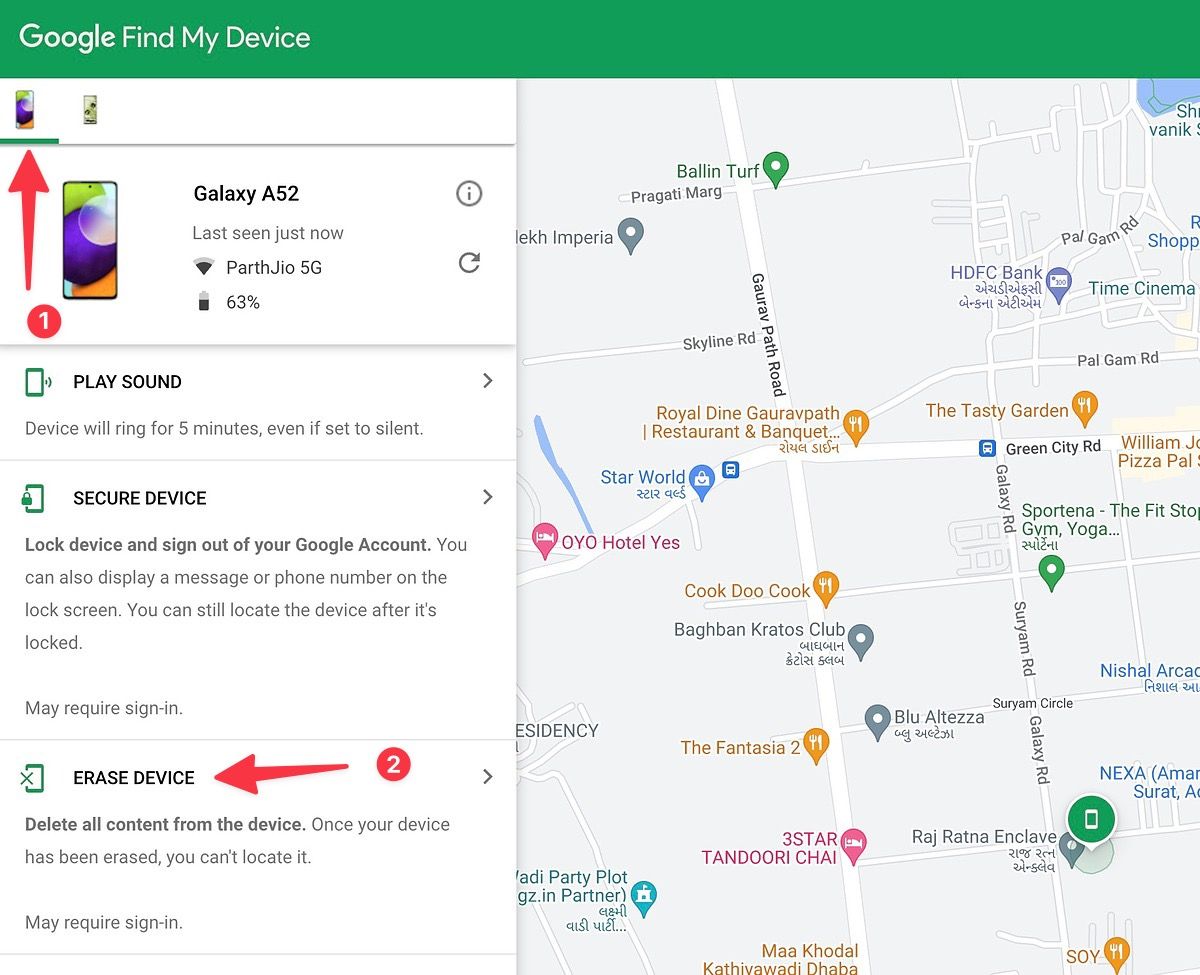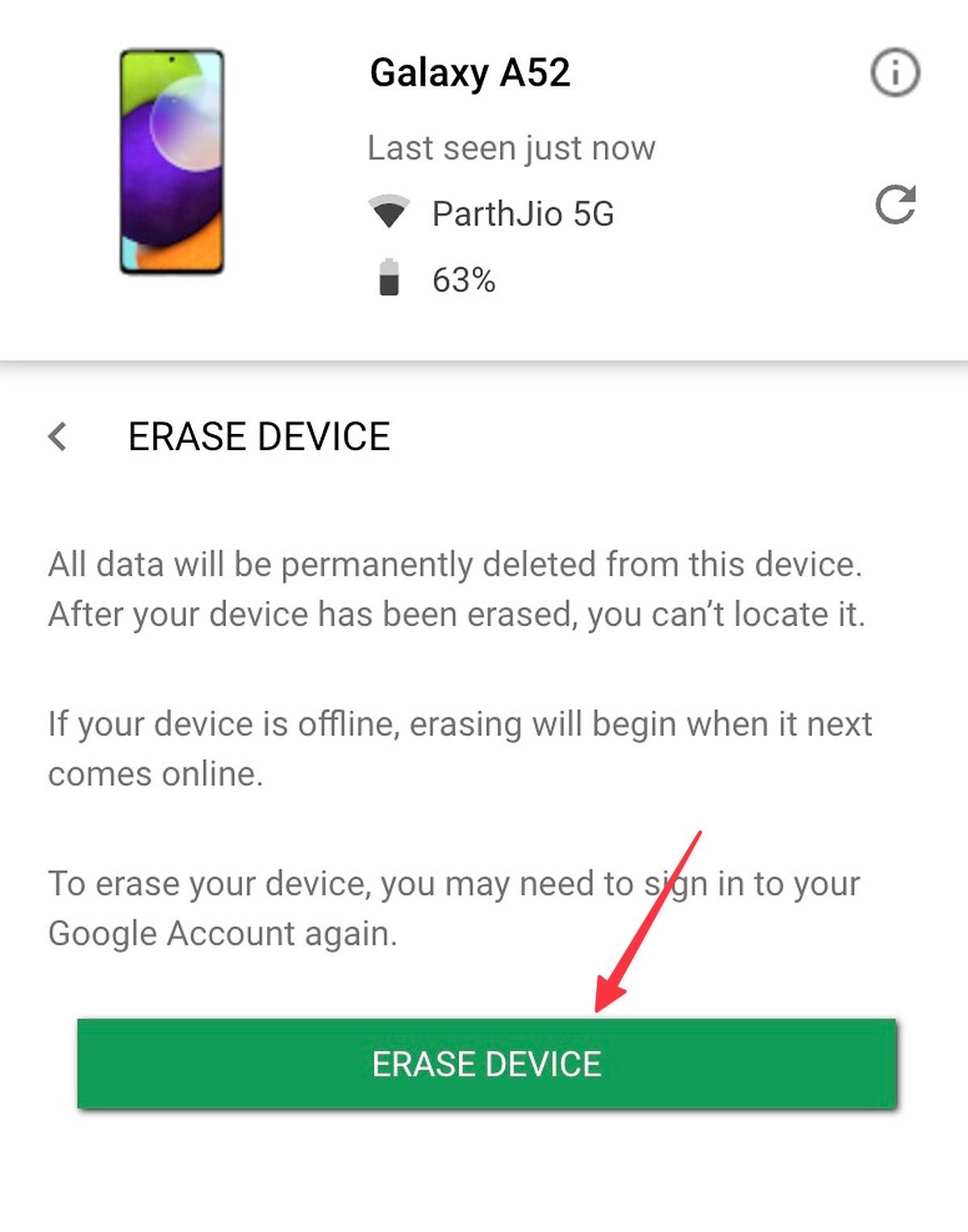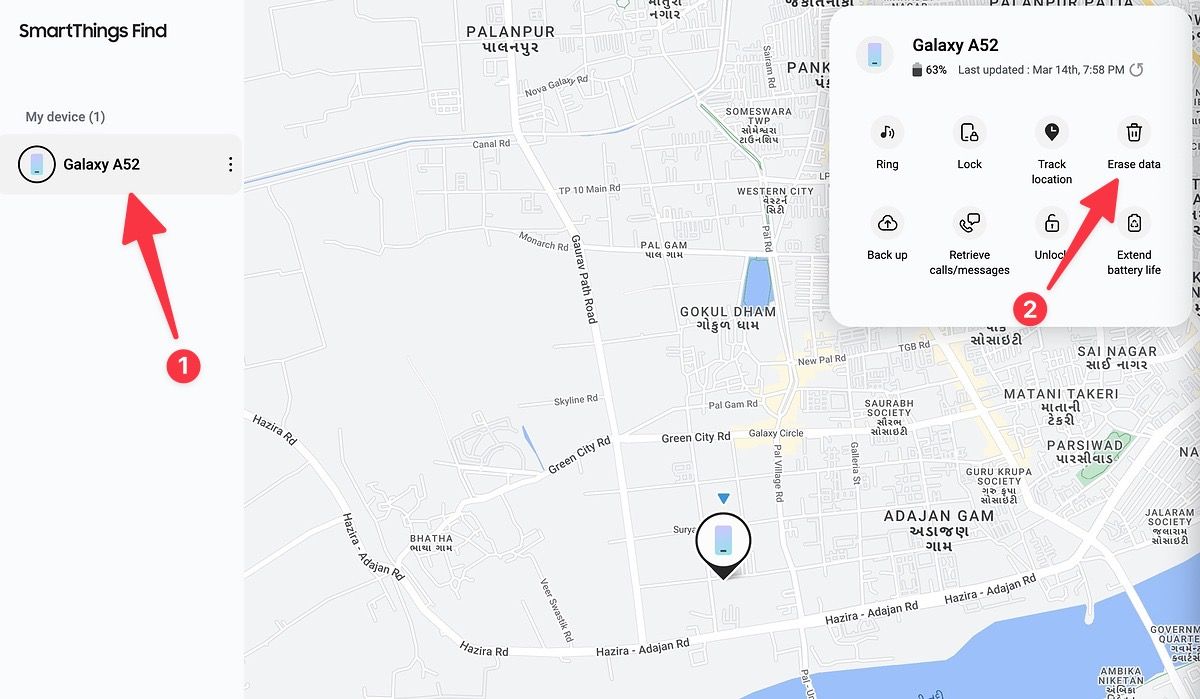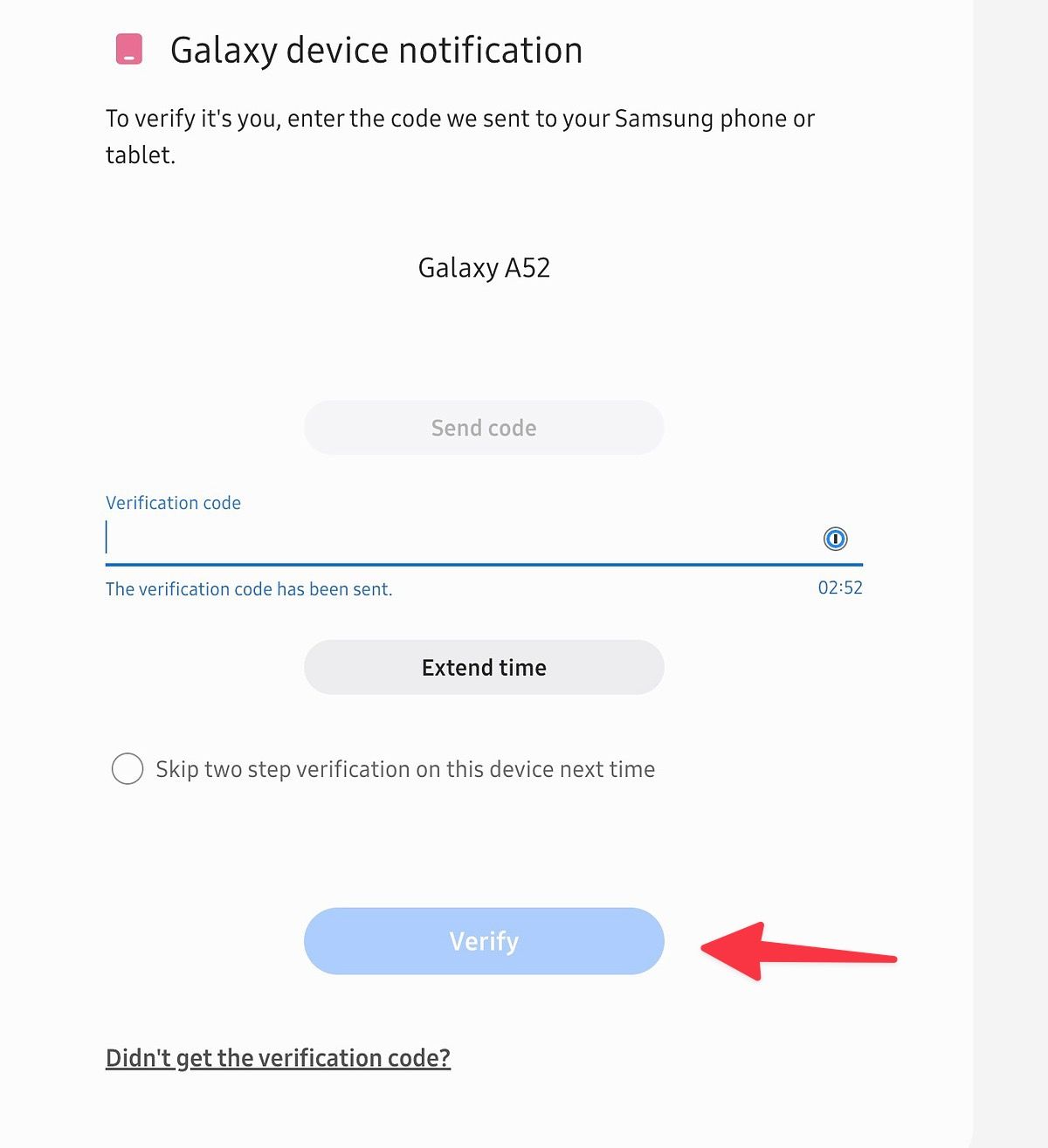If you're considering upgrading to a new Android phone, it's a good idea to do a full factory reset before you trade, sell, or donate your current phone. This is the best way to prevent someone from accessing your private media, banking apps, or email inbox. Another overlooked reason to factory reset your phone is as a last-resort troubleshooting step. When you remove all the apps and data, you can narrow down the issues to the most basic parts of the device.
So, how do you factory reset your old Samsung Galaxy phone or tablet? Here's a quick rundown of what you'll need to do before you reset your phone and some Samsung-specific things you want to keep in mind.
Confirm that your microSD card is not encrypted
If you have one of the few phones with a microSD card slot, ensure your microSD card is not encrypted before you go through with the factory reset. Samsung stores the encryption key to your microSD card on your device. If you format your phone without decrypting the card, you can't access any information on the microSD card. Leaving the microSD card encrypted also means you must format it before you can use it when you set up your next phone. Either way, you will never see the data again if you do not decrypt it.
If you don't know if you encrypted your microSD card when you set up your phone, there's an easy way to check and decrypt it. Follow the steps below to check if your microSD card is encrypted.
- Tap the gear icon to open the Settings app.
- Scroll to Biometrics and security.
- Find the option titled Encrypt or decrypt SD card or Encrypt SD card.
- If the option available is Encrypt SD card (with Ready to encrypt in smaller text underneath), you don't need to do anything. If the option available is Encrypt or decrypt SD card (with SD card is encrypted in small text underneath), you need to decrypt the SD card before you continue.
- To decrypt the SD card, tap Encrypt or decrypt SD card to open the encryption options.
- On the encryption options page, tap Decrypt SD card at the bottom, enter your lock screen credentials if asked, and wait for the process to complete.
The steps above decrypt all your data on your microSD card. The data is less secure but accessible from your phone after the factory reset completes. It allows you to access any backups or media files you may want to transfer via microSD storage.
Suppose you need to encrypt your microSD card the next time you set up your phone. In that case, you must offload all the data to a computer or the device's internal storage before starting the encryption process since encrypting the microSD card erases all the data stored on it.
What happens when you factory reset a Samsung Galaxy phone or tablet
Before we show you the steps to factory reset your Samsung Galaxy phone or tablet, let's first understand the implications of factory resetting an Android phone.
Resetting your device wipes all the information on your phone's internal storage, including photos, videos, files, apps, messages, call history, and contacts. You should upload important media files on Google Photos or OneDrive, save local contacts to Gmail, and back up all the information on your device before starting the factory reset process.
If you are unsure of how to do a backup, there are a few ways to back up your Galaxy phone and ensure that the backup you made is complete before starting the factory reset.
How to factory reset your Samsung Galaxy phone
Once you have completed the backup, it's time to reset your device. To start the reset process, check your Samsung account credentials and the lock screen password from your preferred password manager. You must enter your Samsung account password and lock screen pattern or password to complete the reset.
Once you have your security credentials ready, go through the steps below.
- Open Settings on your Samsung phone.
- Scroll down to General management.
- Select Reset to check several reset options available.
- Tap Factory data reset to open the Factory reset page.
- On the Factory data reset page, review all the accounts and apps to make sure you have synced each of them recently. It's a good idea to make sure you have synced contacts and backed up messaging apps like WhatsApp, Telegram, and Messenger.
- Once you have confirmed that your accounts are synced and your app data is safe, scroll down and tap the Reset button.
- If you have a passcode login or pattern unlock set up, enter that to proceed.
- On the next Factory data reset page, tap the Delete all button to start the factory reset process.
- When you tap Delete all, your phone asks you to enter the credentials for the Samsung account you have linked to the device. Enter your password in the required field, and then tap OK to start the factory reset process.
Once you start the factory reset process, your phone permanently erases all the data stored on your device's internal storage. During the reset process, your phone restarts at least once. When the process is complete, you must complete the device setup to continue using it. Don't go any further if you plan to sell your phone or hand it down to friends or family.
Factory reset your Samsung Galaxy phone through Find My Device
If you lost your Samsung phone or forgot your lock screen password, use the Find My Device service to remotely reset the phone. Your phone must be turned on and connected to mobile data or Wi-Fi. Since you can't access your phone, you can only retrieve data that is already backed up.
When you use the Find My app to reset your Samsung phone, you must sign in with the same Google account details you used to set up the phone.
Find My Device is enabled by default on all Android phones.
Find My Device app
If you have another Android phone with the same Google account, use the steps below to access your Samsung phone and erase all the data.
- Open the Find My Device app on your Android phone.
- Select your Galaxy phone on the list.
- Tap Erase device.
- Read the implications of remotely erasing your device. Confirm your decision.
If your Samsung phone is offline, the erasing process begins when it comes online.
Find My Device desktop app
Not everyone has two Android phones to work with. If you are among those, use the Find My Device web app to factory reset the phone.
- Visit Find My Device on your preferred desktop browser. Sign in with your Google account details.
- Select your Galaxy phone at the top.
-
Click Erase Device. It may ask you to enter your Google account password.
-
Select Erase Device from the following menu.
Factory reset your Samsung phone using SmartThings Find
You can hard reset your Galaxy phone or tablet using Samsung's SmartThings Find service. It's Samsung's take on Google's Find My Device with more features. Here's what you need to do.
- Go to SmartThings Find on the desktop.
- Sign in with your Samsung account details.
- Select your Galaxy phone or tablet from the left sidebar.
-
Click Erase data from the pop-up menu. You can back up, unlock, lock, ring, extend battery life, and track location from the same menu.
-
Samsung sends a six-digit verification code to your device. Enter it and follow the on-screen instructions to reset the phone.
You may not need a hard reset
Factory resetting a device often makes sense, even if you plan to continue using it as your daily driver. It's a great way to keep it feeling fresh. Plus, an annual digital declutter is never a bad thing if your phone is a bit bogged down.
If you frequently face network issues on your Samsung Galaxy phone, you don't need to factory reset it and start again. You can reset network settings and enjoy flawless network connectivity.

